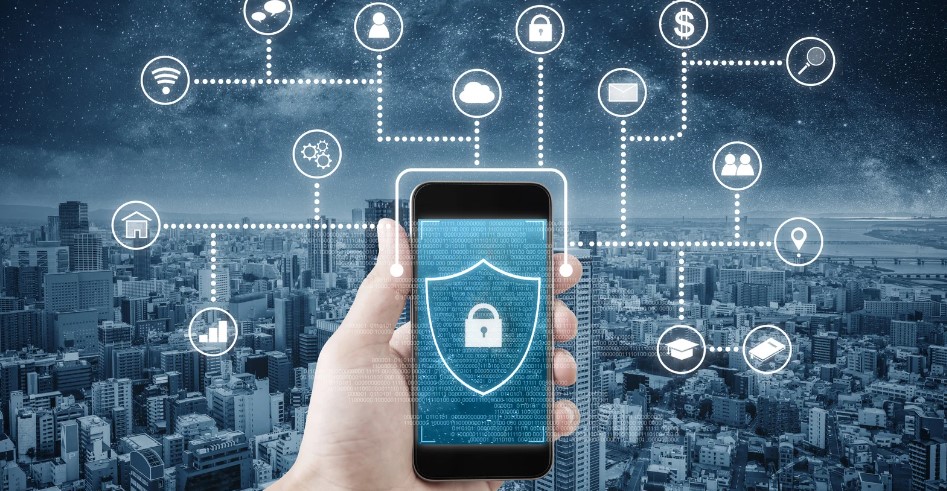Did you know that turning your Digitize paper documents into digital files can save you time and space while making it easier to stay organized? If you’re wondering how to digitize paper documents, this guide is for you. We’ll show you simple steps to your scan birth certificate and papers and store them digitally. No more piles of paper taking up space on your desk! Whether you’re a student trying to tidy up your study area or a professional wanting to organize your files better, this guide has got you covered. Let’s make the switch from paper to digital easy and stress-free!
Why Are Digital Documents So Popular Now?
In the past, paper was the go-to for storing information. But now, with technology getting better, more people are turning their papers into digital files. Why? Well, going digital saves space and lowers the chances of losing or wrecking important stuff. Plus, it’s way easier to find what you need when it’s all digital. Imagine a law firm: by going digital, they can grab client files quickly during meetings or in court. This boosts how well they work and helps keep things accurate and reliable.
Why You Should Digitize Your Business Documents
There are lots of good reasons to go digital with a hard copy of documents. Here are 10 benefits that can boost your business:
More Space: Imagine a whole room of filing cabinets versus just one hard drive. Digital wins for space-saving.
Easy to Find: No more digging through cabinets. With digital files, you just click, and there it is. Plus, multiple people can search at once.
Quick Retrieval: Forget about hunting through folders. Just type in what you need, and boom, it’s right there.
Collaboration Made Easy: No need to make copies to share. Send a file over email and work together in real time, no matter where you are.
Enhanced Security: Locks and keys are so last century. Digital files are encrypted and super secure. You’d need more than a hammer to crack them.
Save Resources: Say goodbye to buying paper and toner. Going digital saves you money on office supplies.
Better Backup: Digital backups can save your files, even if disaster strikes. If you lose your paper files, they’re gone for good.
Long-Lasting Files: Paper wears out over time, but digital documents stay pristine forever.
[Read More: The Growing Importance of Holistic Education]
Simple Steps to Easily Digitize Documents
Here’s an easy method to digitize paper documents with simple steps.
Step 1: Collect Paper Documents
Start by collecting all the copies of the document. Take the time to arrange and go through your files carefully to make sure you have everything you need.
To avoid overlooking any information when converting to format create a systematic and orderly plan. After gathering all your documents get them ready, for scanning or converting them into formats. This approach streamlines the digitization process. Guarantees that important data can be conveniently accessed digitally.
Step 2: Ready Documents for Scanning
Before scanning documents make sure to take off any staples, paper clips, or bindings that might cause scanning issues. This will help guarantee that each page is scanned copies of documents correctly. Additionally, straighten out any folded pages to achieve the scanning outcomes.
Make sure to fasten notes and loose papers to their documents to avoid misplacing them while scanning. It’s crucial to organize your papers for a digitization process.
Step 3: Select a Scanning Method
There are options each having its advantages and disadvantages. Your decision will be influenced by factors such, as the type and size of the document desired scanning quality, and the scanning equipment you have access to.
Common scanning techniques include flatbed scanning, sheet-fed scanning, and bulk scanning.
When deciding on the scanning method, for your digitization project consider that flatbed scanning is ideal for managing documents of shapes whereas sheet-fed scanning is more effective for handling quantities of standard-sized documents. Bulk scanning proves beneficial for converting file cabinets or archives into formats. Keep these factors in mind when selecting the approach, for your digitization endeavor.
Step 4: Scan the Documents
Begin scanning by placing your documents on the scanner bed or, into the sheet-fed scanner as needed. Make sure to align your documents to avoid any scans. Adjust the scanner settings such as resolution and color mode to achieve the desired image quality. Start scanning to capture each document.
This process might require some time depending on the size and quantity of documents. Monitor the scanning process carefully to guarantee the scanning of each document. Once scanned, assess the images, for clarity and readability. If any documents seem blurry or unreadable rescan them to ensure record keeping.
Step 5: Organize and Store Digital Documents
Once you’ve scanned your documents make sure to store and arrange them in a way. You can create folders. Utilize document management software to categorize and label your files. This structured approach makes it easier to locate and retrieve documents ultimately saving time and boosting productivity.
Additionally, it’s important documents to back up your digitized documents to safeguard against system failures or data corruption. Consider saving copies, on drives or utilizing cloud storage services for added protection. A dependable backup system ensures the longevity and accessibility of digitized documents, for businesses.
The Future of Digitizing Paper Documents
With new technology, organizations can improve their efficiency by getting rid of physical paperwork. Here are some ways this can be done:
AI-powered Document Organization
AI can automatically sort and tag documents based on their content. This makes it easier to find and use information, saving time and reducing errors. AI can also extract data from documents to fill out forms or databases, making data management more accurate and efficient.
Mobile Document Digitization
This means a hard copy of a document is converter paper documents into a digital format using smartphones or tablets. It lets users access and manage their documents anywhere, reducing the need for physical storage and the risk of losing or damaging documents. Services like those from Acadecraft also allow for easy sharing and collaboration, boosting productivity.
Blockchain in Document Management
Blockchain technology can make document management safer and more secure. It provides a decentralized way to store and share documents, ensuring they can’t be changed without leaving a trace. This increases trust and security compared to traditional systems that rely on a central authority.
User-Friendly Interfaces
To make the most of digitizing documents and using blockchain, it’s important to have interfaces that are easy to use. This helps users quickly upload, access, and manage their digital documents, encouraging more people to adopt these technologies and benefit from their security and efficiency.
Collaborative Cloud-Based Platforms
These platforms allow multiple users to work on a document at the same time, improving teamwork and streamlining workflows. Documents can be accessed from anywhere, reducing the need for physical copies and the risk of loss or damage. They also offer advanced security features like encryption and access controls to protect sensitive documents.
[Read More: Typography vs. Calligraphy: Understanding the Difference]
Photograph Your Documents
Another way to digitize paper documents is by copying photos to digital format. This is especially useful for large documents that are hard to scan.
You can use your smartphone or a digital camera to take a photo of the document, saving it as a digital image file. Make sure to take the photo head-on in a well-lit area for the best way to digitize paper documents.
Advantages of Photographing Your Documents
Cost-effective: Taking photos of documents doesn’t require expensive scanning equipment.
Convenient: You can use almost any modern smartphone to photograph documents, making it easy for businesses to digitize documents on the go.
Fast and easy: It’s quick and straightforward to take a photo of a document without needing special skills or equipment.
Easy to share: Digitized documents can be shared like any other image on your phone.
Disadvantages of Photographing Your Documents
Quality issues: Photos might be blurry or distorted, making the text hard to read.
Inaccuracy: You might miss parts of the document or capture them in the wrong order, leading to errors.
Security risks: Photos of documents might store sensitive information on an insecure device.
Time-consuming: Taking photos of many documents can take a lot of time, and you need to check each photo for quality.
Organization: Digitize paper documents need to be correctly organized and labeled to be easily found later, which can be challenging with photos.
Conclusion
Digitizing paper documents is simple and beneficial. By following easy steps to scan and store your files digitally, you can save time, and space, and improve organization. Whether for personal or professional use, going digital ensures quick access, better security, and streamlined collaboration. Make the switch today!





